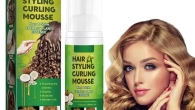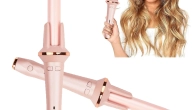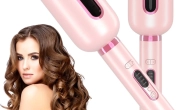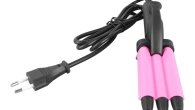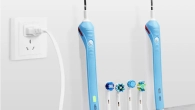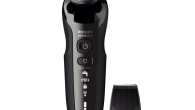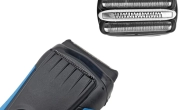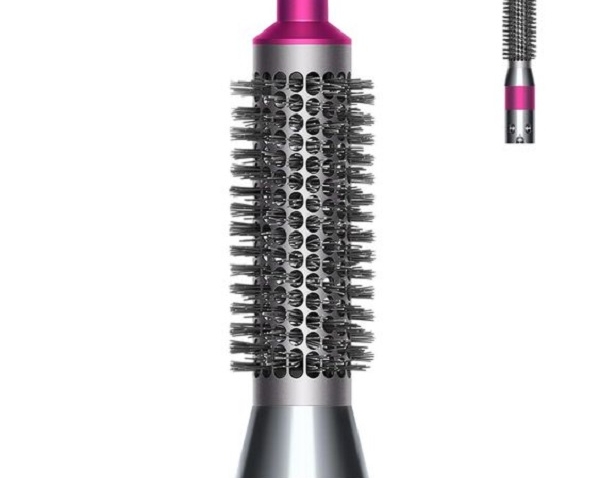
How to Create Soft Waves in Short Hair?
Short hair is a timeless and versatile style that exudes confidence and effortless chic. But achieving those coveted soft waves on short hair can sometimes feel like an elusive dream. Fear not, short-haired beauties! This comprehensive guide will unveil the secrets to creating stunning soft waves on your short locks, empowering you to embrace your inner hair goddess in 2024.
Achieving soft wave hair can enhance your look with a touch of effortless elegance. Whether you have a bob, lob, or pixie cut, soft waves can add volume, movement, and texture to your hairstyle. This comprehensive guide will explore various techniques for creating soft waves in short hair, detailing step-by-step instructions, recommended tools, and products, along with tips for maintaining the style.
How to Get Soft Waves in Short Hair?
Understanding the Basics of Soft Waves
Before diving into the styling techniques, it’s essential to understand what soft waves are and why they’re popular for short hair.

Definition of Soft Waves: Soft waves are gentle, loose curls that create a subtle and natural wave pattern in the hair. Unlike tighter curls or ringlets, soft waves offer a relaxed, beachy look that’s versatile and easy to achieve.
Benefits for Short Hair: Soft waves add dimension and texture to short hair, making it appear fuller and more voluminous. They are suitable for various occasions, from casual outings to formal events, and work well with different hair types and lengths.
Tools and Products Needed
Having the right tools and products is crucial for successfully creating and maintaining soft waves in short hair.
Required Tools:
- Curling iron or wand (preferably with a small barrel for short hair)
- Flat iron (optional for an alternative method)
- Heat protectant spray
- Hair clips or sectioning clips
- Wide-tooth comb or brush
- Blow dryer (with a diffuser attachment for best results)
- Hair spray or texturizing spray (for hold and texture)
Recommended Products:
- Volumizing mousse or spray (for added lift)
- Sea salt spray (for a beachy texture)
- Lightweight styling cream (for smoothness and shine)
- Finishing serum or oil (for added shine and frizz control)
Step-by-Step Guide to Creating Soft Waves with a Curling Iron
Follow these detailed steps to create soft waves in short hair using a curling iron.

Step 1: Preparing Your Hair
Wash and Condition: Start with clean, conditioned hair. Use a lightweight shampoo and conditioner to avoid weighing down your hair, which can flatten the waves.
Apply Heat Protectant: Before styling, apply a heat protectant spray to your damp hair. This product shields your hair from heat damage and ensures a smoother finish.
Dry Your Hair: Blow dry your hair using a round brush for added volume or use a diffuser attachment if you prefer a more natural texture. Ensure your hair is completely dry before using any heat styling tools.
Step 2: Sectioning Your Hair
Divide Your Hair: Section your hair into manageable parts using hair clips or sectioning clips. For short hair, divide it into top and bottom sections, working from the back to the front.
Work in Small Sections: Starting with small sections ensures that each piece of hair gets evenly curled and allows for better control. Aim for sections about 1 inch wide.
Step 3: Curling Your Hair
Choose the Right Barrel: For short hair, a curling iron with a barrel size between 3/4 inch to 1 inch works best. Smaller barrels create tighter waves that can be brushed out into soft waves.

Curl Away from the Face: Take a small section of hair and wrap it around the curling iron, curling away from the face. Hold the curl for a few seconds, then release gently. This technique opens up the face and creates a natural wave pattern.
Alternate Directions: To achieve a more natural look, alternate the direction of your curls. Curl one section away from the face and the next section toward the face. Continue this pattern throughout your hair.
Step 4: Finishing Touches
Cool and Set: Allow your curls to cool completely before touching them. This cooling period helps set the curls and ensures they last longer.
Brush or Comb Out: Once your curls are cooled, use a wide-tooth comb or your fingers to gently brush out the curls. This step relaxes the curls into soft waves.
Apply Texturizing Spray: Finish with a texturizing spray or light hair spray to add hold and texture. Use a small amount to avoid making the hair stiff.
Alternative Method: Creating Soft Waves with a Flat Iron
A flat iron can also be used to create soft waves in short hair. Follow these steps for an alternative approach.
Step 1: Preparing Your Hair
Wash, Condition, and Protect: Follow the same preparation steps as with the curling iron, ensuring your hair is clean, conditioned, and protected with a heat protectant.
Drying and Sectioning: Blow dry your hair and section it into manageable parts, just as you would for a curling iron.
Step 2: Creating Waves with the Flat Iron
Clamp and Twist: Take a small section of hair and clamp the flat iron near the roots. Twist your wrist to turn the flat iron away from your face, pulling it down to the ends. This technique creates a wave instead of a curl.
Alternate Twisting: To achieve an undone, natural look, alternate the direction in which you twist the flat iron. Twist one section away from the face and the next section toward the face.
Release and Cool: Gently release the hair from the flat iron and allow it to cool. This process sets the wave pattern.
Step 3: Final Touches
Comb and Style: Once all sections are waved and cooled, use a wide-tooth comb or fingers to loosen the waves gently. This step creates soft, flowing waves.
Finish with Texturizing Products: Apply a texturizing spray or light hair spray to maintain the waves and add texture. Avoid overusing products to keep the waves soft and touchable.
Tips for Maintaining Soft Waves in Short Hair
Implementing regular practices helps maintain and enhance the appearance of your soft waves.

Use the Right Pillowcase: Sleeping on a silk or satin pillowcase reduces friction and prevents your waves from becoming frizzy overnight.
Avoid Over-Styling: Limit the use of heat styling tools to reduce damage. Embrace your natural texture and use heatless methods like braiding or twisting damp hair for waves.
Refresh with Sea Salt Spray: On non-wash days, refresh your waves with a sea salt spray. This product adds texture and definition, enhancing the softness of your waves.
Protect from Humidity: Humidity can cause waves to frizz and lose shape. Use anti-humidity products to maintain the wave pattern and combat frizz.
User Insights and Experiences
Learning from other users’ experiences with creating soft waves in short hair provides practical tips and insights.
Positive Feedback: Users often highlight the importance of using lightweight products to avoid weighing down short hair. They emphasize the effectiveness of heat protectants and texturizing sprays in maintaining waves.
Common Challenges: Challenges include achieving even waves and maintaining volume. Users find that working in small sections and alternating curl directions address these issues effectively.
Daily Maintenance Tips: Regular maintenance practices, such as using silk pillowcases and refreshing with sea salt spray, help prolong the style. Users also recommend minimal use of heavy products to maintain the waves’ softness and bounce.
Seek Professional Advice: Consulting a professional stylist for personalized tips can provide valuable insights into achieving and maintaining soft waves in short hair. Stylists can recommend specific products and techniques tailored to your hair type.
Comparing Different Methods for Soft Waves
Understanding the advantages and drawbacks of different methods helps you choose the most suitable technique.
Curling Iron vs. Flat Iron:
- Curling Iron: Provides well-defined, structured waves. Suitable for those who prefer more control over the wave pattern.
- Flat Iron: Creates a more relaxed, natural look. Ideal for those who want a quicker, less structured wave.
Heat Styling vs. Heatless Methods:
- Heat Styling: Offers precise and long-lasting results. Requires proper heat protectant to minimize damage.
- Heatless Methods: Gentle on hair, reducing the risk of damage. Involves techniques like braiding, twisting, or using foam rollers on damp hair.
Maintenance of Styling Tools
Proper maintenance of styling tools ensures their longevity and optimal performance.

Regular Cleaning: Clean your curling iron or flat iron regularly to remove product buildup. Use a damp cloth or a specialized cleaner to wipe down the surface.
Inspect for Damage: Regularly inspect your styling tools for signs of wear or damage. Replace tools with worn-out cords, cracked plates, or bent barrels to avoid damage to your hair.
Proper Storage: Store your styling tools in a cool, dry place. Avoid wrapping cords tightly around the tools, as this can cause them to fray or break.
Conclusion
Creating soft waves in short hair involves understanding the basics, using the right tools and products, and following detailed steps for either curling iron or flat iron methods. Proper preparation, sectioning, and finishing techniques are crucial for achieving and maintaining beautiful, soft waves. Addressing common challenges, learning from user insights, and seeking professional advice enhance your styling experience. Regular maintenance of styling tools and adopting daily practices to prolong the style ensure that your soft waves remain elegant and well-defined. Whether through heat styling or heatless methods, embracing the proper techniques and products makes all the difference in achieving the desired look for your short hair.





